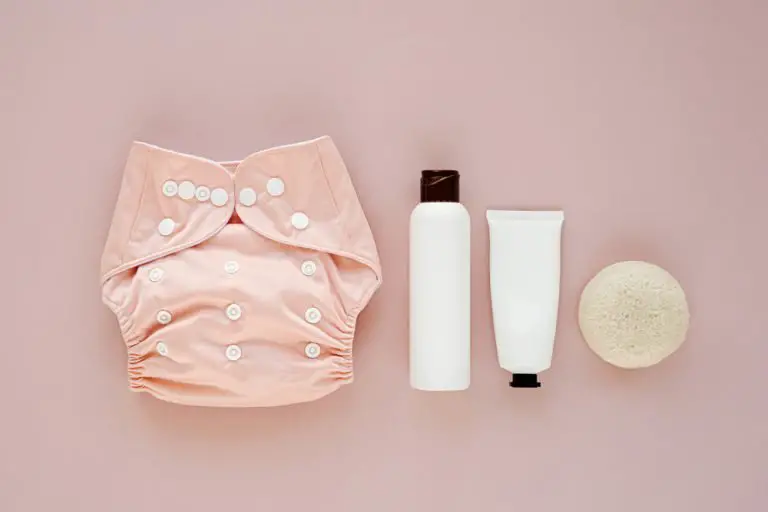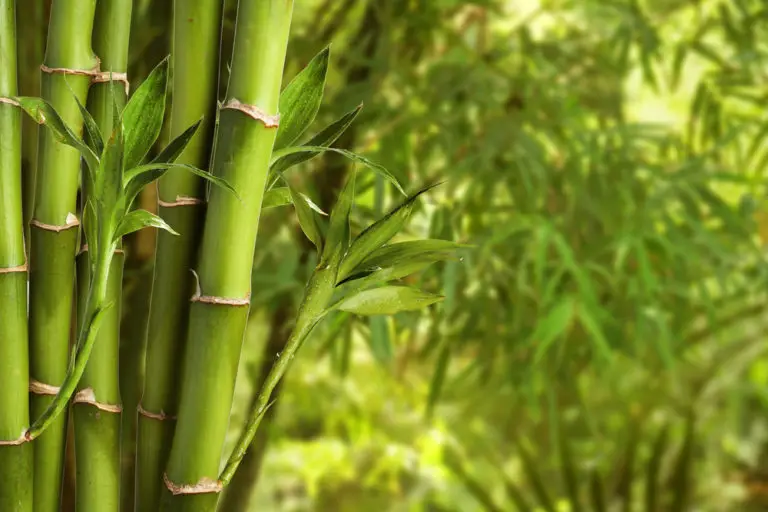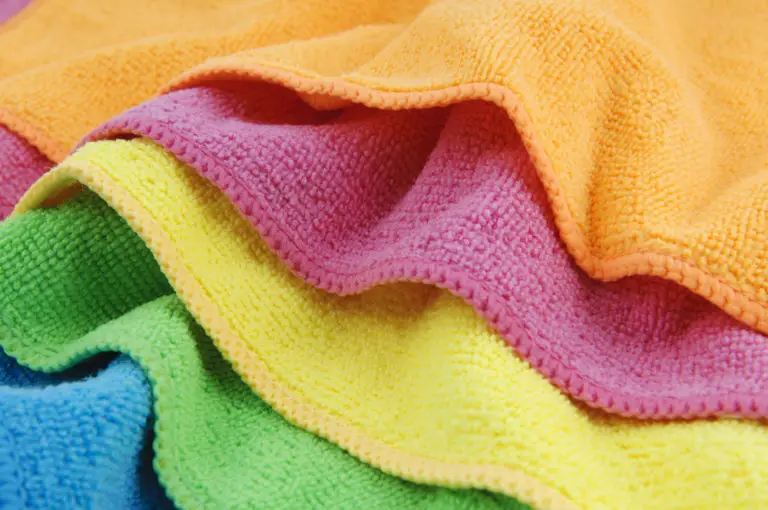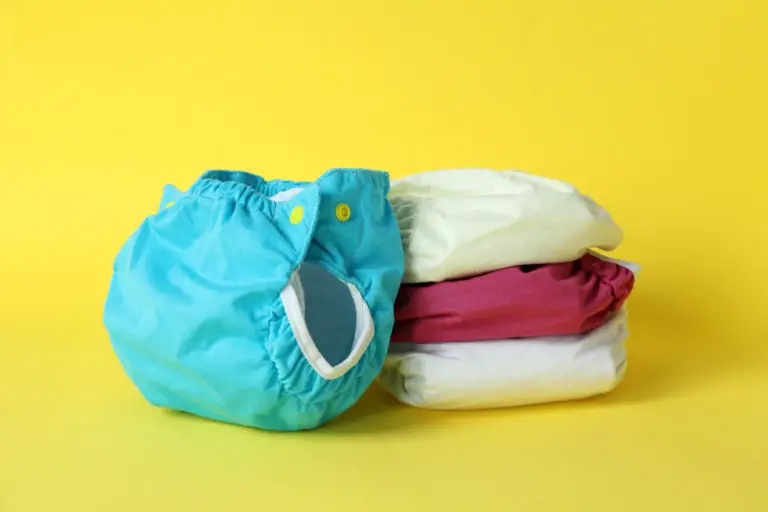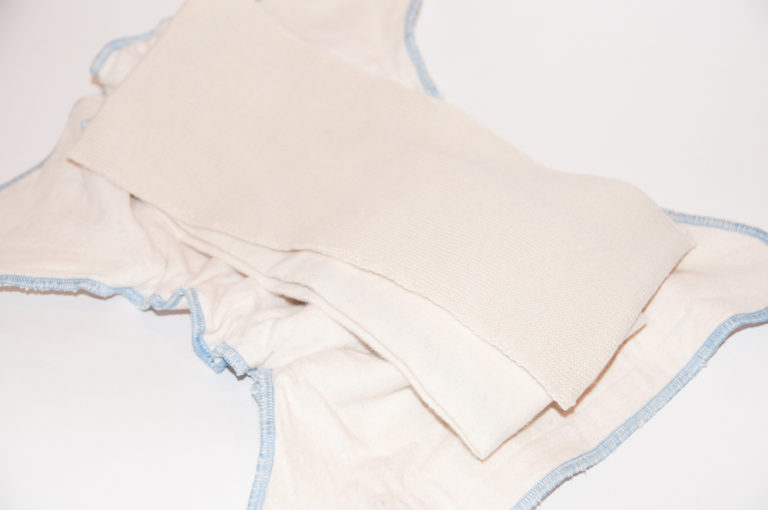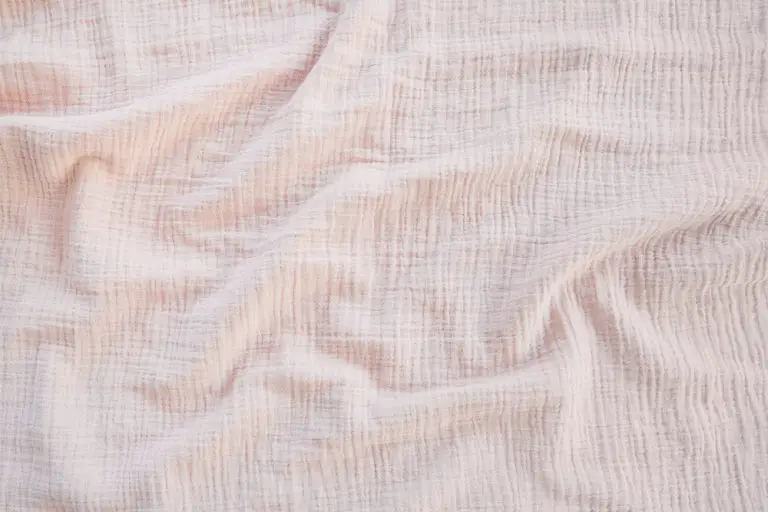Wool Fabric: Properties, Pricing & Sustainability (2024)
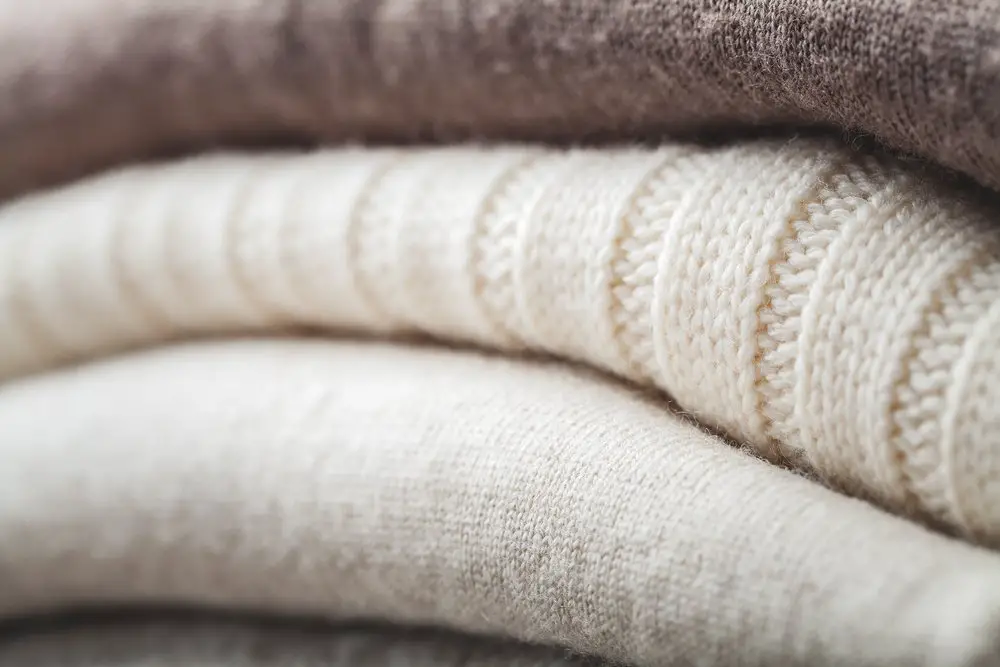
Wool fabric is an ancient fabric made from the fleece of sheep or other animals. Wool garments and textiles can be traced back to approximately 4,000 B.C.E.; however, sheep were domesticated around 11,000 years ago, so it is likely wool has been used as a textile longer than we have evidence of. Its warmth and soft texture characterize wool, and today it is used worldwide.
Fabric Profile
Fabric Name: Wool
Synonyms: Cashmere, Fleece, Fur
Fiber Type: Natural fiber from animals
Breathability: Fairly breathable
Absorbency: Water-resistant
Characteristics: Moisture-wicking, water-resistant, breathable, soft, warm
Washing Requirements: Wash on cool or warm
Common Uses: Sweaters, suits, jackets, blankets, cloth diapers, socks
Heat Press Temperature: You should not iron wool
- What is Wool?
- Types of Wool Fabric
- Wool Fabric Characteristics
- Downsides of Wool Fabric
- Common Uses of Wool Fabric
- Wool Fabric Pricing
- How is Wool Made?
- Where is Wool Manufactured?
- Wool Fabric Environmental Impact
- Wool Fabric Certifications
- History of Wool Fabric
- Wool Fabric Alternatives
What is Wool Fabric?
Wool cloth is most commonly associated with sheep fleece, but wool can come from a variety of different animals, including different types of sheep, alpaca, llamas, goats, and musk oxen. Wool has been around for thousands of years and is still widely used today for clothing and textiles because of its amazing characteristics.
Wool is created by spinning animals’ hairs or fibers into a yarn and then using that yarn to weave. Wool textiles are naturally insulating, making them a popular choice in cold climates. But because it is breathable, you will also find it used in warmer climates too!
To be considered 100% wool, the fabric must consist of only animal hair. However, there are blends of different types of wool and wool blended with different synthetic and natural materials.
Wool vs. Cotton vs. Fleece
Right away, there is one significant comparison you can make between wool, cotton, and fleece; they all have a different source.
While fleece may sound like it comes from an animal, it is a synthetic petroleum-based fabric engineered to replicate wool. Cotton, on the other hand, is a natural fiber that dates back further than recorded wool. The oldest cotton textile ever found was found in Peru and is dated to approximately 6000 B.C.E.
Of the three fabrics, cotton is the most breathable, followed by fleece than wool. Wool and fleece are warmer than cotton because they better insulate your body and trap in heat. Depending on the outdoor activity you’re engaging in, wool may be better than fleece or vice versa.
Wool provides better wind resistance, so if you are on a boat, sitting at a sporting event, or taking a gentle stroll, it is the better choice. However, if you are jogging or engaged in physical activity, you might prefer the breathability and warmth fleece provides.
Types of Wool Fabric
You may not have realized that there are several different types of wool fabric. You can make wool clothing and textiles from any of the following types of wool: merino wool, shetland wool, alpaca wool, angora wool, mohair wool, lambswool, cashmere wool, melton wool, and camel wool. Each of the types of wool has some unique characteristics and popular uses.
Merino Wool
Merino wool is the most common and popular type of modern wool fabric. Merino sheep, from where the wool gets its name, were initially bred in Spain. However, today, Australia is the biggest exporter of merino wool.
Merino wool is particularly oily and greasy from the lanolin produced by the sheep, so it must go through a process of removing the lanolin before manufacturers can spin it into wool.
Merino wool is a very fine wool, and it is widely used as an insulating layer of fabric for jackets, blankets, and blazers. However, you can also use merino wool to make blouses, sweaters, and even short sleeve tops and tanks.
Shetland Wool
The Shetland sheep is a small sheep that originated in the Shetland Isles of Scotland. This sheep gives its name to the wool made from its fleece characterized by its soft and durable characteristics. Shetland wool is a popular choice for knitting and other needlecrafts.
Shetland wool is the most diverse in color of all the wool fabrics, naturally offering over eleven different shades. In addition, Shetland has an added benefit in that, for most people, it doesn’t itch or irritate the skin.
Also, shetland is an inexpensive type of wool which means you get more bang for your buck! Finally, perhaps the best of the shetland wool fabric properties is that it doesn’t pill like merino and other types of wool.
Alpaca Wool
Alpaca wool is made using the fleece from alpaca and is more commonly found in South America, where alpacas are native. It is similar to vicuna wool, also found in South American countries. The vicuna is a closely related animal to the alpaca.
Alpaca wool is incredibly versatile because it can be spun to have either a heavy or light texture. Alpaca wool is also much more durable and softer than sheep’s wool. In addition, woolen materials made from alpaca wool are breathable and insulative at the same time because of naturally occurring, minuscule air pockets in the fibers.
Angora Wool
Angora wool is often confused with mohair wool for a few reasons. First is that mohair wool comes from angora goats. But angora wool actually is from angora rabbits. Second, both types of wool are incredibly soft and silky.
Angora wool is luxuriously soft and expensive, but it does not have a good reputation with animal welfare constituents. Even though the rabbits are not killed to collect the wool, they are not typically kept in humane settings.
Angora wool is warm and lightweight and is usually mixed with other fibers to increase its flexibility. There are four breeds of angora rabbits used to create angora wool: Satin, Giant, English, and French.
Mohair Wool
Mohair wool is made from the hair of angora goats and is not to be confused with angora wool made from rabbits. Like angora wool, it is incredibly soft and silky. Mohair wool is a costly type of wool and was very trendy in the 1970s and 80s.
Mohair is not naturally stretchy wool, so it is sometimes blended with other types of wool to increase its stretchiness and durability.
Even though gathering mohair wool should not harm the goats, the mohair industry has a lackluster reputation for its way of treating animals. PETA has often cited horrific conditions for the goats, especially at farms in South Africa, the leading mohair producer.
Lambswool
Lambswool, also known as virgin wool, is a lightweight wool fabric made from a lamb’s first shearing. Virgin wool can also refer to wool that has not been recycled. Lambswool is much softer than traditional wool and less likely to cause itching or irritation.
In addition to its softness, lambswool is moisture-wicking, hypoallergenic, and breathable.
To be considered lambswool, the sheep must be seven months or younger. Lambswool is a favorite among those who knit because it is soft and can be used to make clothing like sweaters and cardigans and home textiles such as bedding, carpets, and upholstery.
Cashmere Wool
The word cashmere is synonymous with luxury and wealth, and cashmere wool is one of the most expensive wool styles available. The name comes from the region of India, Kashmir, where the wooly goats whose coats started the trend originated.
Cashmere wool is a soft, fine wool, similar to merino but what makes it so costly is that the goats used to produce cashmere only produce around 150 grams each per year. Cashmere wool has been around for centuries but became popular in the 19th century during British imperialism in India.
Cashmere wool is usually referred to as cashmere and is a popular choice for luxury sweaters, cardigans, jackets, gloves, hats, and scarves.
Melton Wool
Melton wool is a thick, tough, and heavy wool characterized by its dense weave. To make melton wool, it must be woven in a twill pattern with a fuzzy surface. Melton wool is widely used to make naval wear, heavy-duty blankets, and winter coats.
Melton wool material does not usually fray, is wind-resistant, and has moisture-wicking properties.
Melton wool is known as heavily fulled wool which, in addition to removing oil, dirt, and other impurities, makes the wool thicker. Melton wool is a distinctly UK wool that goes back centuries to the town of Melton Mowbray.
The wool was a popular choice for huntsmen to wear while outdoors fox-hunting and participating in other sports because of its warmth and water resistance.
Camel Wool
Camel wool is exactly what it sounds like; it is wool made from a camel’s coat hair. Camel hair suits were quite popular during the first part of the 20th century.
While camel wool is warm, it is much less durable than other types of wool, and because of its rough, coarse texture, it is not ideal for clothing or textiles that directly touch the skin.
Camel wool has been around for thousands of years but didn’t become popular in the western world until the 17th-19th centuries. Today camel wool is used primarily to make outerwear and when part of a wool blend, sweaters, and scarves.
Wool Fabric Characteristics
The characteristics of wool fabric include many favorable properties which make wool a popular and ancient fabric. First, wool fabric texture is soft and warm. While some coarser and less high-quality wool can be a bit rough to the touch, it is generally considered soft.
Additionally, wool has moisture-wicking properties, making it an excellent fabric for outdoor wear and cloth diaper covers. Wool is also very insulating, and it traps the body’s natural heat to keep the wearer warm.
This natural insulation comes from the wools crimp or wavy texture. The crimp varies from wool to wool, but the wavier the crimp, the more insulating the wool textiles made from that type of wool will be.
Additional wool fabric properties include durability, breathability, and stretchiness. Wool is a very durable fabric, and it is relatively breathable and has some natural stretch to it. Some types of wool are more flexible than others, and sometimes you will see wool blends to give the fabric more moveability.
Downsides of Wool Fabric
Despite all of the wonderful upsides to wool, consumers have a few negative wool fabric qualities to consider. The first is that wool comes from an animal, and for some, that is a deal-breaker.
Even though shearing an animal for wool should not harm them, there have been some complaints of animal treatment on wool farms over the years. Even in the most humane settings, though, some people simply prefer to avoid using animal products.
A second downside to wool is that it can be itchy and irritating to the skin, and some people may be allergic to the fabric. In that case, synthetic or hypoallergenic wool, such as alpaca wool, is a better choice.
Because wool is a naturally moisture-wicking and heavy fabric, it is slow to dry and must be air-dried. Wool is also prone to pilling and can be bulky to wear, and may not be seen as fashionable as other types of fabric.
Common Uses for Wool Fabric
Wool fabric is widely used to make clothing and textiles, particularly for cold weather and climates. However, wool’s breathability makes it a popular choice from baby blankets and cloth diaper covers.
Wool fabric durability and warmth are well known, and the fabric is often used to make jackets and outerwear for the navy and those who work on boats and the water. You will also find wool jackets, coats, and suits in stores for everyday winter wear.
Many people like to use wool to make socks, hats, scarves, sweaters, gloves, and blankets because of its insulating properties.
Some lesser-known uses for wool include carpeting, insulation for blankets and jackets, and firefighting gear because it doesn’t melt, shrink or stick to the skin when exposed to hot temperatures. Additionally, it has no toxic odors if it does burn.
Wool is also used to make dresses, skirts, pants, shawls, and baby toys.
Wool Fabric in Cloth Diapering
Wool is a commonly used fabric in cloth diapering. Wool diaper covers can be handmade, purchased from crafting and small business sites, or from major retailers in some instances. Wool is usually used as a soaker or diaper cover over a prefold or fitted diaper.
One benefit of wool soakers is that you can typically reuse a cover several times before needing to wash them. In addition, wool covers are a great option for overnight because they can hold so much moisture and quickly wick it away from your baby’s bottom.
A wool diaper cover combined with a fitted diaper and an absorbent diaper insert can keep your baby dry up to twelve hours overnight.
Wool is also warm and breathable, so it is comfortable on your baby’s bottom. You can use wool to make traditional cloth diaper covers or longer diaper pants called longies or diaper covers with an overskirt called skirties.
Wool Fabric Pricing
Wool fabric tends to be a more expensive textile than many other natural and synthetic options out there. Its main competitor is cotton, and wool tends to be significantly more expensive than cotton, but it also offers some unique benefits that cotton does not.
Wool fabric pricing is affected by several factors, including the weather, the health of the sheep, labor availability to shear the sheep, and shipping speed and availability. Wool fabric price is also influenced by the type of wool it is. For example, merino wool, the most common, costs less than cashmere or vicuna wool.
Vicuna wool can cost as much as $3,000 per yard; however, that is extreme, and on average, wool fabric by the yard costs around $24.99 to $39.99 for traditional plaid wool or plain colored fabric.
Cashmere wool typically costs around $119 to $149 per yard, depending on the brand and design, while angora falls in the middle, at around $79.99 per yard.
How is Wool Fabric Made?
The process of making wool fabric is fairly simple, and no matter which animal the hair fibers come from, the process is fairly simple.
Making wool fabric begins with shearing or collecting the fleece or hair fibers from an animal: sheep, goat, llama, rabbit, etc. In most instances, the wool is sheared or cut from the animal’s body without harming the animal.
Next, the wool is cleaned, and in most cases, the natural lanolin is removed. The wool is then dived into bales and carded or made into strands. The strands of fiber are then spun into yarn and washed again. Finally, the yarn is either dyed and sold as yarn or woven into different types of textiles.
Depending on the purpose of the textile, it may go through additional processes after being woven. Some of these processes include dyeing and fulling or processing the wool to make it shrink-proof.
Where is Wool Manufactured?
The leading wool manufacturer in the world is Australia. Australia produces roughly 25% of the world’s wool supply. Comparatively, China manufacturers about 18% of the world’s supply, followed by the United States at 17% and New Zealand with 11%.
The wool industry is a billion-dollar business, and it is one of the countries leading exports. Australia is also the world’s leading manufacturer of wool clothing.
In 2016 the United States produced over 25 million pounds of wool. The largest wool-producing states in the U.S. are Texas, Colorado, Utah, Wyoming, and California.
Despite New Zealand’s small size, it is the 4th largest producer of wool in the world. It is estimated that for every one person in New Zealand, there are six sheep!
South Africa is the leading producer of Mohair wool. Mongolia and Scotland are both leading producers of cashmere wool, and Ireland and Italy are also home to some notable cashmere producers, namely Johny Hanley and Loro Piana.
Wool Fabric Environmental Impact
In general, the production of wool does not have a negative impact on the environment. This is because sheep were domesticated nearly 11,000 years ago, and many of the other animals used to create wool have also long been domesticated and living on farms.
Therefore, assuming the animals live in cruelty-free domains, most people do not have an environmental or social issue with wool production.
However, as with all farming, raising sheep and other animals does contribute to soil erosion, and large amounts of animal fecal matter can pollute local waterways if not disposed of properly.
It has also been noted, most vociferously by PETA, that sheep and goat farmers often kill coyotes, wolves, foxes, and kangaroos that they claim interfere with their farming or harm their animals. Although farmers still claim that kangaroos break their fences and damage their crops and lands, many people in Australia have fought back against this opinion.
Wool Fabric Certifications
Pure wool fabric is eligible for several certifications attesting to the quality and sustainability practices used to produce the wool. The most prestigious and prominent of these certifications is the RWS or Responsible Wool Standard. The RWS certifies different types of wool and looks at the welfare of the animals and the land they live on as well as social welfare and best practices for farmers.
Another certification wool manufacturers can apply for is Woolmark. Woolmark ensures the wool fabric quality by ensuring it is 100% wool. Woolmark tests for additional quality assurance factors such as color steadfastness, durability, and resistance to shrinkage.
Lastly, the International Wool Textile Organization (IWTO) offers various certificates that verify the wellbeing of the animals, sustainability, and different environmental aspects. Furthermore, membership in the IWTO offers farmers additional benefits such as educational and informational resources, cost-sharing, and maximizing physical resources.
History of Wool Fabric
Similar to many other natural fibers, wool fabric history dates back thousands of years. Evidence supports that humans domesticated sheep 11,000 years ago, with the oldest discovered wool textiles dating to around 6,000 years ago. However, historians believe that wool was probably being used as a textile before that.
It is believed that wool was first used in Ancient Persia, what is now modern-day Iran. However, many cultures used wool throughout history using fur or fleece from the animals native to their lands, such as goats, oxen, alpaca, and llamas.
However, some wool facts we know are that sheep were introduced to Europe around 4,000 B.C.E. A woolen textile was discovered in a Danish bog dated to 1,500 B.C.E. By the middle ages, wool had become a substantial textile and industry in Italy. But, the world changed when the British introduced sheep to Australia during their imperialism and expansion of the 17th and 18th centuries.
Wool Fabric Alternatives
Perhaps the most natural alternative to wool fabric is fleece. Fleece was designed to emulate wool but has some added benefits. Fleece is a synthetic material created to be like wool; however, it is more breathable and lightweight than wool.
Both fleece and wool have moisture-wicking properties and do an excellent job at insulation and keeping you warm!
Another alternative to wool is cotton flannel. Cotton flannel is lighter than wool fabric weight but still does an excellent job keeping the wearer warm. On the other hand, cotton does not have the same moisture-wicking property as wool, and it is more prone to wrinkles.
Hemp is another natural fabric that can be used in place of wool, especially if you are looking for an animal-free product. Hemp is biodegradable like wool and breathable; however, it doesn’t trap heat as well.
Lastly, linen and bamboo are ancient fabrics made from plants and durable and gentle on the skin.
FAQ
Why is wool fabric so expensive?
Wool is expensive because the animals can only produce so much wool per shearing season. In addition, some animals produce more or less fur, which affects the price as well.
Is wool a luxury fabric?
Some types of wool are considered luxury fabrics, such as vicuna, mohair, angora, and cashmere wool. The more popular merino wool is more costly than other fabrics such as cotton or polyester but is still affordable.
Does water ruin wool?
No, water will not ruin wool. Wool is a very absorbent fabric and can hold up to 35% of its weight in water. It also has moisture-wicking properties.
Why is wool so itchy?
Not all wool is itchy; some types, like mohair, cashmere, angora, and lambswool, are soft and silky. However, the way wool is spun, some fibers stick out slightly; this texture can be itchy or irritating for some people.
Which is cheaper, wool or cotton?
Cotton is a less expensive fabric than wool; even organic cotton typically costs less than the cheapest wool style.
Is fleece wool?
Fleece fabric is not wool. Instead, fleece is a polyester synthetic fabric that was invented to simulate wool’s warmth and softness.
Which wool is the softest?
Vicuna wool is considered the softest, and it is very expensive. Comparatively, mohair, angora, and cashmere are also very soft wools.
Is wool heavy or light?
Wool can be heavy and bulky depending on the type of wool and the way it is spun. However, despite its weight, it is a fairly breathable fabric.
How to wash wool?
Wool is best washed on cold water and allowed to air dry. Using a dryer or washing in hot water could make your wool clothing shrink.
How to unshrink wool?
Soak your shrunk garment in a tub with baby shampoo or hair conditioner and lukewarm water. Allow it to soak for ten to thirty minutes, take it out of the water, lay it flat, and gently try to reshape it.
What is wool made of?
Wool is made from the fur of animals, typically herding animals such as sheep, goats, llamas, and some wool is made from rabbits such as angora wool.

Laurel Davidson
Laurel brings her passion for parenting and years of problem-solving experiences to ParentingMode. She is the editor of ParentingMode, ensuring that the content is relevant and valuable to the readers. Laurel received her master’s degree in public administration with a certificate in economic development. She is a stay-at-home mom, raising two adorable kiddos, Aurora and Thomas. Laurel enjoys sharing her experience as a parent, traveling, and good food.

